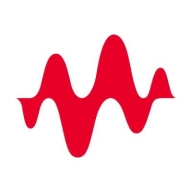

Ixia Hawkeye and Elastic Observability compete in the network performance and observability markets, respectively. Elastic Observability holds an advantage with its extensive ecosystem integration and broader functionalities, while Ixia Hawkeye specializes in network performance, offering competitive pricing and customer support.
Features: Ixia Hawkeye focuses on network path monitoring and real user traffic emulation, providing insights into network performance and latency. It is tailored for organizations prioritizing network health. Elastic Observability provides end-to-end application performance monitoring, log management, and infrastructure monitoring, allowing integrated observability across complex environments.
Room for Improvement: Ixia Hawkeye could enhance its application monitoring and expand its ecosystem integration for users needing comprehensive observability solutions. Improvements in user interface flexibility and scalability could add value to its offering. Elastic Observability could streamline its setup process, enhance the accessibility of support resources, and adjust pricing models to accommodate smaller businesses looking for robust solutions without high initial costs.
Ease of Deployment and Customer Service: Ixia Hawkeye is known for its straightforward deployment and reliable customer service, making it accessible for network performance monitoring. Elastic Observability may require more effort in deployment due to its extensive features but benefits from seamless integration within the Elastic ecosystem once operational, though its customer support could use better accessibility.
Pricing and ROI: Ixia Hawkeye offers competitive pricing, appealing to budget-conscious companies focused on network performance with quicker ROI. Elastic Observability's pricing may be higher initially, reflecting its extensive feature set, which provides significant value in the long run for enterprises seeking comprehensive observability. Specific pricing details should be verified directly with vendors for precise cost assessment.
| Product | Market Share (%) |
|---|---|
| Elastic Observability | 2.9% |
| Ixia Hawkeye | 0.3% |
| Other | 96.8% |


| Company Size | Count |
|---|---|
| Small Business | 8 |
| Midsize Enterprise | 4 |
| Large Enterprise | 16 |
Elastic Observability offers a comprehensive suite for log analytics, application performance monitoring, and machine learning. It integrates seamlessly with platforms like Teams and Slack, enhancing data visualization and scalability for real-time insights.
Elastic Observability is designed to support production environments with features like logging, data collection, and infrastructure tracking. Centralized logging and powerful search functionalities make incident response and performance tracking efficient. Elastic APM and Kibana facilitate detailed data visualization, promoting rapid troubleshooting and effective system performance analysis. Integrated services and extensive connectivity options enhance its role in business and technical decision-making by providing actionable data insights.
What are the most important features of Elastic Observability?Elastic Observability is employed across industries for critical operations, such as in finance for transaction monitoring, in healthcare for secure data management, and in technology for optimizing application performance. Its data-driven approach aids efficient event tracing, supporting diverse industry requirements.
We monitor all IT Infrastructure Monitoring reviews to prevent fraudulent reviews and keep review quality high. We do not post reviews by company employees or direct competitors. We validate each review for authenticity via cross-reference with LinkedIn, and personal follow-up with the reviewer when necessary.